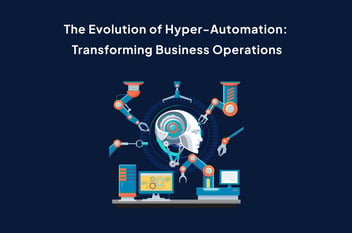"Crowdsourced testing," often referred to as "crowdtesting," is a quality assurance methodology that relies on distributing tests to a geographically diverse community of testers across the globe. It is believed that crowdsourced testing represents a pragmatic and efficient approach to quality assurance for the majority of software businesses.
Crowdsourced testing proves its effectiveness in part due to its global nature, encompassing users from around the world, a wide array of devices, and, in the case of UX (User Experience) testing, diverse opinions, and cultural perspectives. This inclusivity ensures its capability to identify bugs that might only manifest in specific device types or environmental conditions. Furthermore, crowdtesting serves as a cost-efficient means to address tests that cannot be automated and facilitates the rapid scalability of QA resources when confronted with sudden peaks in QA demands. Instead of depending on an in-house team of testers, crowdsourced testing leverages the varied skills and viewpoints of a dispersed group of testers.
Within the realm of crowdsourced testing, the testing objectives and tasks are shared with this crowd, who then independently conduct testing on various devices, platforms, and configurations. These testers can be located anywhere globally, possessing diverse backgrounds and levels of expertise. They typically receive guidelines, test cases, and access to the software or application under scrutiny, subsequently reporting their discoveries, bug identifications, and feedback to the overseeing testing organization.
Who’s involved in crowdsourced testing?
Crowdtesting entails enlisting a considerable number of testers situated in various locations. This approach offers several benefits, such as continuous availability around the clock and the ability to control for different demographic factors. By involving a wide array of individuals to conduct tests under diverse conditions, crowdtesting becomes a more resilient testing method, adept at uncovering bugs that may be specific to particular countries or regions.
However, it's important to note that crowd testers cannot replace in-house QA teams. A reputable crowdtesting provider will still require the product and business knowledge that an in-house team member can offer. They must establish effective structures to convey this vital information to individual testers.
Advantages of Crowdsourced Testing
- Testers from Various Backgrounds
Crowdsourced testing allows you to access a wide array of testers with different backgrounds, locations, and skill levels. This diversity is instrumental in uncovering a broad spectrum of issues and guarantees that your product is evaluated from various user perspectives.
- Scalability
Crowdsourced testing allows you to quickly scale up your testing endeavors by engaging a substantial number of testers concurrently. This proves especially advantageous when facing tight deadlines or the necessity to test your product across different platforms, devices, or configurations.
- Cost Efficiency
Opting for crowdsourced testing can often be a more budget-friendly choice when compared to the expenses associated with maintaining an internal testing team or engaging external testers individually. Crowdsourcing platforms frequently provide adaptable pricing structures, enabling you to compensate for testing services in accordance with the extent and duration of the required testing. This adaptability can also result in time savings.
- Flexibility in Time and Location
Crowdsourced testing offers flexibility in terms of when and where testing occurs. Testers can participate from any location worldwide and at any time, facilitating continuous, around-the-clock testing.
- Real-World Testing
Crowdsourced testers are authentic users capable of offering feedback derived from their real experiences and usage habits. This aids in identifying usability issues, flaws in the user experience, and other aspects that traditional testing methods might overlook.
- Swift Feedback and Time-to-Market
Crowdsourced testing enables quick feedback loops due to the ability to engage a large number of testers concurrently. Speeding up the testing process is crucial, especially when following software development practices such as continuous integration (CI) and continuous delivery or deployment (CD) to launch new applications and features.
- Expanded Test Coverage
By employing crowdsourced testing, you can attain a more extensive test coverage by engaging testers who possess various devices, operating systems, web browsers, and network configurations. This aids in pinpointing issues specific to particular platforms or environments that may affect the user experience.
Despite these advantages, it's essential to acknowledge that crowdsourced testing also comes with limitations, including potential communication challenges, security considerations, and the necessity for effective test management and coordination. Managing these factors is vital to ensure the success of crowdsourced testing initiatives.
How does crowdsourced testing benefit your organization?
Crowdsourced testing offers software businesses an excellent opportunity to enhance efficiency, reduce costs, and ensure the delivery of a product that resonates with customers. Integrating potential end-users into the testing process serves as a bridge between developers and consumers.
By optimizing your QA testing procedures and bringing in additional assistance when necessary, you can allocate your resources to other crucial aspects of launching a new app or website.
However, it's essential to ensure that you engage experienced testers who comprehend your objectives before you commence. Exploring crowdsourced testing companies that handle recruitment and management can be a valuable step in this process.




